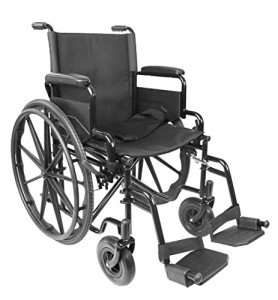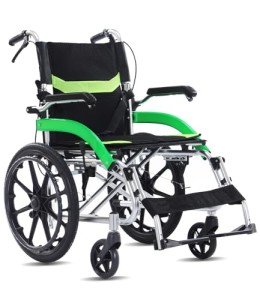7 Small Changes You Can Make That'll Make A Big Difference In Your Sel…
Louie
0
0
01.06 22:57
 Self Propelled Wheelchair With Attendant Brakes
Self Propelled Wheelchair With Attendant Brakes lightest self propelled wheelchair-propelled wheelchairs that have attendant brakes are a great option for those who require extra stability and support while traveling. These chairs have rear drive wheels, as well as various add-ons such as swing away leg rests or flip up armrests.
lightest self propelled wheelchair-propelled wheelchairs that have attendant brakes are a great option for those who require extra stability and support while traveling. These chairs have rear drive wheels, as well as various add-ons such as swing away leg rests or flip up armrests.Unfortunately, there have been very few biomechanical studies of the turning and maneuvering of attendant propelled wheelchairs. This area warrants further research.
Seat size
The width of a chair is the distance between the frame's edges. This is important when choosing a wheelchair, because the different types of users will require different sizes. For instance, those who have larger thighs might need to choose the wheelchair with a larger seat. To determine a suitable size, you must sit in the chair and take a measurement of the width across your thigh. The best way to measure is using a yardstick. It will give you an accurate measurement.
The seat width of a self propelled wheelchairs propelled wheelchair with attendant brakes is important to think about, particularly for caregivers. A wider seat will allow the user to move more easily and comfortably. It also makes it easier for the caregiver to maneuver the chair through tight spaces. A lot of attendant controlled wheelchairs are light and have smaller wheels that allow for easy pushing and maneuvering. This makes them perfect for people with limited upper body strength and coordination.
In addition to having a comfortable chair, a wheelchair should have easy-to-use brakes. They are essential to ensure safety when driving or moving. They also improve the occupants' autonomy and reduce stress. Dundee University research has shown that the most effective brake system utilizes a foot lever which can be accessed easily and operated by one hand.
In contrast to self propelled wheel chair-propelled chairs, which have larger rear wheels as well as hand rims, attendant controlled wheelchairs have smaller wheels and are designed to be pushed by caregivers. They are perfect for people who have a weak upper body and can be easily maneuvered in a variety of settings. In addition, most models have cable brakes to provide added security and convenience. Some models even fold flat, making them ideal for storage and transportation in cars. Many models also emphasize comfort, with features such as comfortable armrests and seating.
Seat height
The seat height of a self propelled wheelchair with attendant brakes can differ significantly and must be carefully considered. The most comfortable position is sufficient height that allows the occupant to sit up straight and unaffected by strain. However, the height of the seat can affect the amount of force required to push the wheelchair forward. This could have a significant effect on the performance of a wheel chair and is especially relevant when a wheelchair is equipped with front-wheel drive.
The positioning of the pushing handles can make a huge difference to the ease with the wheelchair is driven. Most current wheelchairs feature handles that are either horizontally across the rear of the frame or as backward-pointing levers that extend from the chair back. However the results of recent push studies have revealed that these positions for handles are not appropriate for wheelchair use.
Many people use wheelchairs at home as well as in hospitals and other situations. Many of them have trouble walking and require assistance to move around. Attendants, who are typically family members or close friends of the person who is seated, may be unable to walk and might find it difficult to move wheelchairs indoors and outdoors. Additionally they may experience difficulty getting the person out of the chair.
The ability of the attendant to control the wheelchair in a chaotic setting is a major issue. A wheelchair with good manoeuvrability is crucial, as is a large set of wheels and puncture-proof tyres. For a smooth ride, an excellent castor trail is required (the distance between the wheel axes and handle holder axes).
The Ugo Esteem Lightweight Self Propelled Wheelchair with Attendant Brakes is an excellent example of a well-designed wheelchair that is easy to push. This model is made of a lightweight aluminum alloy frame, with a warranty of two years for the frame and puncture proof tyres. It has adjustable footplates as well as armrests, an elevated leg rest option (please select the drop-down menu) and the frame folds down compactly making it easy to move and put away.
Seat depth
The seat depth of the chair is a crucial aspect that determines how easy it is for the user to move. A seat with a deeper depth can stop a user from sliding forward and falling off the chair. A seat that is not deep can cause discomfort and even injury. A wheelchair should have at minimum 2 inches of depth. This will let you move around small obstacles and climb kerbs.
In addition to the width of the seat, the height of the seat and armrests are also important in determining the ideal size of the wheelchair to suit a particular user. A taller person would require an upper seat, while smaller people will require a smaller one. If the wheelchair is to be used for postural support the backrest must be higher than the normal. This will ensure that the wheelchair is comfortable for the user and allow them to sit up straight.
The resistance of a wheelchair's wheels is based on the force applied to the wheels, and this force is determined by the wheel's diameter, radius of curvature and the condition of the surface. Wheels can be designed with a softer tire, to reduce friction between the tire tread and the road surface, or to increase the width of the rim. The wheel's moment inertia can be reduced as well by altering the castor design.
The ugo Esteem Self-Powered Wheelchair is an example. It has a castor path that can be adjusted to suit the person. This makes it less likely to slide and more easy to turn when starting from a rest. The adjustable footrest height and angle along with the seat cushion and the backrest allow it to be more flexible to the needs of each user.
You can determine the seat height of a chair by measuring the distance between the spine's base and the back of your knee. This measurement is usually taken by a caregiver to avoid injuries to the wheelchair user. It is crucial to take into account whether the user requires a footrest, and in the event that so, the height of the footrest.
Armrests
Wheelchairs are commonly employed by hospital staff to transport patients between departments and as a main mode of transportation for patients who are unable to walk. Transferring patients into and out of wheelchairs can be a challenging task for attendants who must lift them into and out every time, while also pushing and manoeuvring the chair across various kinds of terrain. The ergonomic design should aim to make the operation and propulsion of these chairs as easy as is possible for attendants by making them less physically demanding on them. This means that the characteristics of handling the chairs, including their resistance to rolling, their turning resistance, height of the handle and the position of the brakes must be designed biomechanically in order to maximize the comfort of the attendants.
The armrests in a self-propelled wheelchair with attendant brakes must be correctly positioned to allow patients with good arm strength to assist them in rising from the chair and they must be able to be removed in order to prevent blocking the access of those who are less able to lift themselves into the seat. The first prototype chair made in Dundee included armrests that were positioned forward to give support to the hands of the user and could be folded down when not in use.
When a person is in the chair for a longer duration or for short trips, it's vital that they feel comfortable and safe. This model's padded seat and backrest are made of tough and wipe-clean nylon. The foot rests of this model can also be moved and swung away to make transfers easier.
The light attendant controlled chair comes with a variety of features that can be beneficial for the caregiver or the attendant. They include adjustable footplates, flip-up, armrests that can be removed to aid with side transfers and help them to get closer to their desks cable brakes to slow down speed and a stepping tube for climbing curbs. It also has a fold down backrest for easy storage and transport. The lightweight wheelchair is available in two sizes and comes with a 12 month warranty as standard.
